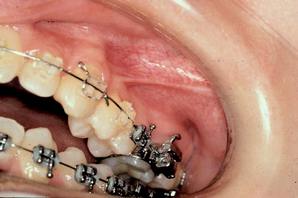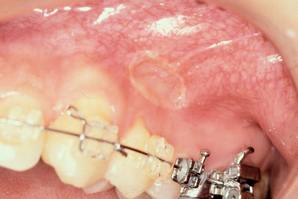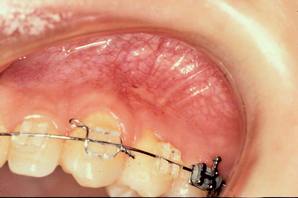The use of diode lasers continues to grow in general and specialty dental practices. The vast majority of dentists who purchase a soft-tissue laser today will buy a diode for a few key reasons:
- The new diode lasers are very compact
- They are relatively inexpensive and offer a rapid return on investment
- They are easy to use clinically
- They have an excellent safety profile and history, so you can feel comfortable about your hygiene team using them for periodontal applications without worrying about the possibility of tooth structure being altered
- They are very reliable – diode lasers are almost all electronic and optical, with few moving parts. This simplicity is what makes them cost effective, compact, and reliable.
“Eliminating the need for sutures greatly simplifies the procedure, making it one that most dentists will feel comfortable performing. This becomes a win-win for both patient and practice.”
Until recently, soft-tissue diode lasers used one of two wavelengths: 810 nm or 980 nm. These wavelengths were selected by laser manufacturers because of their energy absorption characteristics in soft tissue.
Diode lasers expand clinical capabilities; create a win-win for patients and practices.
Diode lasers allow you to perform many soft-tissue procedures you might have been reluctant to perform in the past or would have referred out because of unwillingness to deal with bleeding, sutures, and other surgical complications. Another advantage of the laser in soft tissue is the very small zone of necrosis after tissue contouring. This means the margins stay where we place them. In esthetic cases, this is especially crucial. With a laser, you can perform soft-tissue recontouring of a patient’s smile, prepare the teeth, and take impressions all in the same appointment. In the past, with a blade or an electrosurge, we typically waited a few weeks between softtissue contouring and preparation so that the tissue would have time to heal and or shrink down before final impressions. This soft-tissue margin predictability is why most esthetic dentistry courses being taught today employ diode lasers for soft-tissue recontouring prior to preparations and impressions for esthetic restorations.

Pre-Op
Another area of opportunity for most general dental practices is frenectomies, which are typically under-diagnosed because many dentists are not comfortable with performing the procedure as taught in dental schools. The standard frenectomy typically requires sutures after removal of the frenum attachment. Often, placing sutures in these areas can be difficult. When you consider that patients on average have seven frenum attachments and that any one of them that limits mobility or causes recession can be an indication for a frenectomy, it’s surprising how many patients can benefit from a laser frenectomy. There are many patient benefits from performing the procedure with the laser including reduced or no bleeding, no sutures, and relatively comfortable healing. Eliminating the need for sutures greatly simplifies the procedure, making it one that most dentists will feel comfortable performing. This becomes a win-win for both patient and practice. I highly recommend you have your hygiene team be on the lookout for frenum attachments that may be causing recession.
Finally, the biggest reason to have a diode laser in the practice, in my opinion, is its many uses in the hygiene department.

Intra-Op
Diode lasers can be used to treat periodontal disease, apthous ulcers, herpetic lesions, and to desensitize teeth. They can be used at very low and safe power settings that allow us to remove diseased tissue while leaving healthy tissue alone. At the same time, the laser will kill disease-causing bacteria serve to biostimulate the periodontal pocket.
Biostimulation at low power levels with a diode laser can increase circulation, collagen formation, and fibroblastic and osteoblastic activity. The laser is the first tool I have seen that actually allows us to kick-start the healing process at the bottom of the periodontal pocket—a huge benefit over traditional therapies. The fact that the laser can remove diseased tissue, kill the bacteria that cause the disease, and stimulate healing, makes offering patients laser therapy a big advantage over traditional methods.

Immediate Post-Op
As acceptance of diode laser dentistry expands, I find that many times it is the hygiene team that leads the way in bringing the technology into the office. In a perfect world, the dentist would have a hard- and soft-tissue laser in the operatory for operative dentistry and soft-tissue procedures, while the diode laser would spend most of its time in the hygiene department. In states where hygienists can use the laser, most practitioners find that the hygiene team uses it in some form or other for most patients on their schedule. It might be for something as simple as laser bacterial reduction prior to a prophylaxis or as intensive as long-term laser-assisted periodontal therapy. Hygienists may use the machine for treating apthous ulcers or herpetic lesions, desensitizing teeth, or even whitening teeth. With all the benefits a diode laser can provide to a dental practice, many dentists have begun to realize lasers in the hygiene department can add to overall revenue and profitability. It is not unusual for laser dental hygienists to add additional revenue to the practice while increasing the quality of care for patients.
Another benefit of your hygiene team using lasers is grassroots, word-of-mouth marketing. Patients go back to work or school and tell colleagues or friends about how they were treated by the hygienist with a laser. Having your hygiene team expose most patients to the laser creates more internal referral opportunities. The public perceives lasers in medicine and dentistry as advanced technology, and thinks of clinicians who use lasers as the ones staying on the cutting edge of science and providing the very best care available.

Post-Op
Our company, “Advanced Laser Training,” offers diode-laser certification courses in various cities across the U.S. These daylong courses include 7 CE credits and an Associate Fellowship Certification through the World Clinical Laser Institute (WCLI). In these courses, we teach new laser owners and their hygienists all about diode-laser dentistry and how it can help their patients and their practice. We cover physics, regulatory and safety issues, indications for use, as well as performing hands-on exercises with lasers using pig jaws. Please see our Web site AdvancedLaserTraining.com, or call us at 877- Laser66 (527-3766), if you or your hygiene team would like training. You can also contact the WCLI at www.LearnLasers.com, or call 888-424-6527. Ask for Kimmarie Everett to learn about diode training and certification offered at WCLI symposiums.
[FRENECTOMY CASE PHOTOGRAPHS]
Photo Title: Diode Laser Frenectomy Courtesy Dr. Robert E. Barr
